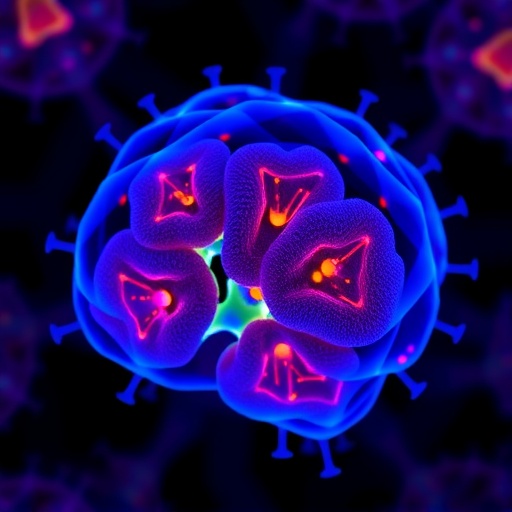In a groundbreaking advancement that may reshape therapeutic strategies for autism spectrum disorder (ASD), recent research has demonstrated promising outcomes following low-dose Interleukin-2 (Ld IL-2) treatment in children diagnosed with ASD accompanied by immune dysfunction. The study, emerging from a clinical investigation documented in BMC Psychiatry, sheds light on the intricate relationship between immune system modulation and behavioral symptoms in ASD, a neurodevelopmental condition historically resistant to definitive pharmaceutical intervention.
ASD affects millions worldwide and is characterized by persistent deficits in social communication, coupled with restricted, repetitive behaviors. While its etiology remains multifaceted and elusive, an increasing body of evidence points to immune dysregulation and neuroinflammation as pivotal contributors. Numerous studies have reported aberrations within both peripheral and central immune compartments in individuals with ASD, implicating chronic inflammatory states as a potential underlying factor exacerbating core symptoms.
The novel treatment approach centers around administering low doses of Interleukin-2, a cytokine with well-established immunomodulatory properties, particularly known for its role in enhancing regulatory T cell (Treg) populations and suppressing inflammatory cytotoxic T cell subsets. Ld IL-2 has gained recognition in autoimmune conditions for its capacity to restore immune homeostasis without eliciting broad immunosuppression, positioning it as a promising candidate in ASD where immune imbalance is evident.
Researchers conducted a single-arm, self-controlled clinical investigation involving 24 children diagnosed with ASD displaying immunological abnormalities. While the comprehensive results are yet to be fully disclosed, the subset of four pediatric participants exhibited striking clinical improvements post Ld IL-2 therapy. These four children, averaging six years old and equally divided by gender, underwent rigorous assessments to quantify behavioral changes, leveraging validated tools such as the Childhood Autism Rating Scale (CARS), Aberrant Behavior Checklist (ABC), and Autism Treatment Evaluation Checklist (ATEC), among others.
The clinical outcomes revealed substantial amelioration in ASD-related behavioral symptoms, with prominent progress in speech, communication, and overall health domains persisting for at least three months following treatment cessation. Caregiver reports corroborated these findings, highlighting enhanced sleep quality and a general uplift in physical well-being—an often overlooked but critical aspect influencing neurodevelopmental trajectories.
Immunological profiling of these patients unveiled a marked reduction in the proportion of Type 1 cytotoxic T cells (Tc1), concomitantly lowering the Tc1 to Regulatory T cell ratio. This shift aligns with the immunosuppressive and regulatory effects expected from Ld IL-2 treatment, suggesting that attenuation of cytotoxic T cell-driven inflammation could alleviate neuroinflammatory contributions to ASD symptoms.
The mechanistic insights provided by these observations are compelling. Regulatory T cells are instrumental in maintaining immune tolerance and moderating inflammatory responses within the central nervous system. Their augmentation via Ld IL-2 could reestablish a more balanced neuroimmune environment, potentially mitigating the neurodevelopmental disruptions seen in ASD. This represents a novel therapeutic avenue distinct from traditional symptom-targeted psychopharmacology.
Moreover, the absence of adverse events in the treated children underscores the safety profile of this approach, alleviating concerns that immune modulation could precipitate unintended immunosuppression or other complications. This is particularly pertinent given the delicate immune considerations inherent in pediatric populations.
The multidimensional assessment strategy employed in this study adds robustness to its findings. By integrating behavioral scales sensitive to social communication, anxiety, mood fluctuations, and caregiver burden alongside immunological metrics, the research offers a holistic perspective on treatment efficacy and patient well-being.
While the sample size is limited, the depth of immune and behavioral data gleaned from these four cases provides a compelling proof of concept. It advocates for larger, randomized controlled trials to validate these findings and refine treatment protocols, including optimal dosing regimens and treatment durations.
These findings resonate beyond the immediate ASD community, illuminating the broader interplay between immune regulation and neurodevelopment. They echo emerging paradigms in neuropsychiatric disorders where immune dysfunction is increasingly recognized as a therapeutic target.
In conclusion, this pioneering work marks a significant step toward harnessing immune modulation via low-dose Interleukin-2 as a viable intervention for autism spectrum disorder. By bridging immunology and behavioral science, the study opens new frontiers for research and clinical application, harboring the potential to improve the lives of countless individuals grappling with the challenges of ASD.
Subject of Research: Investigating the effects of low-dose Interleukin-2 treatment on immune parameters and behavioral symptoms in children with Autism Spectrum Disorder exhibiting immune dysfunction.
Article Title: Observed improvements in immune parameters and behavioral symptoms following low-dose IL-2 treatment in four autistic children with immune dysfunction.
Article References:
Chen, H., Li, M., Yao, P. et al. Observed improvements in immune parameters and behavioral symptoms following low-dose IL-2 treatment in four autistic children with immune dysfunction. BMC Psychiatry 25, 991 (2025). https://doi.org/10.1186/s12888-025-07389-9
Image Credits: AI Generated




